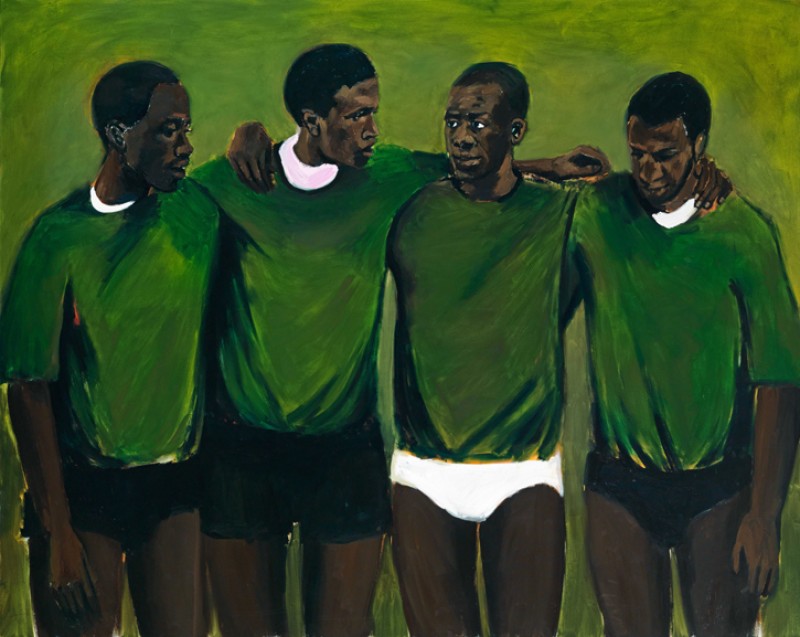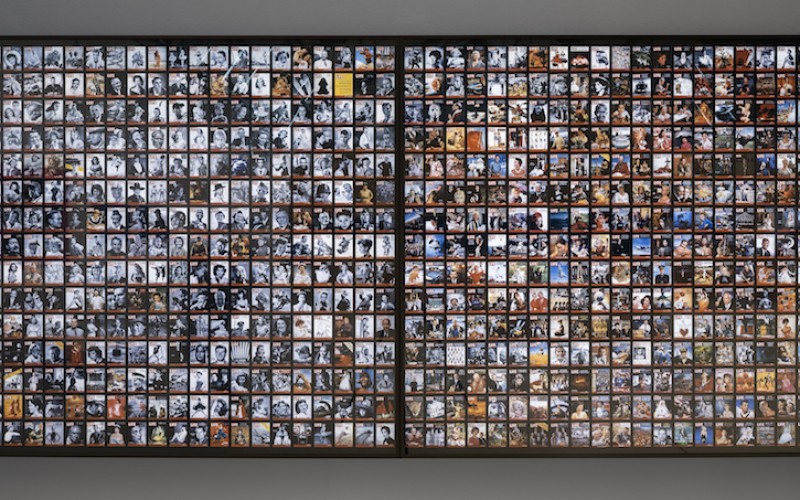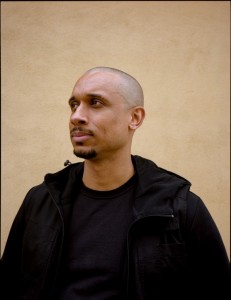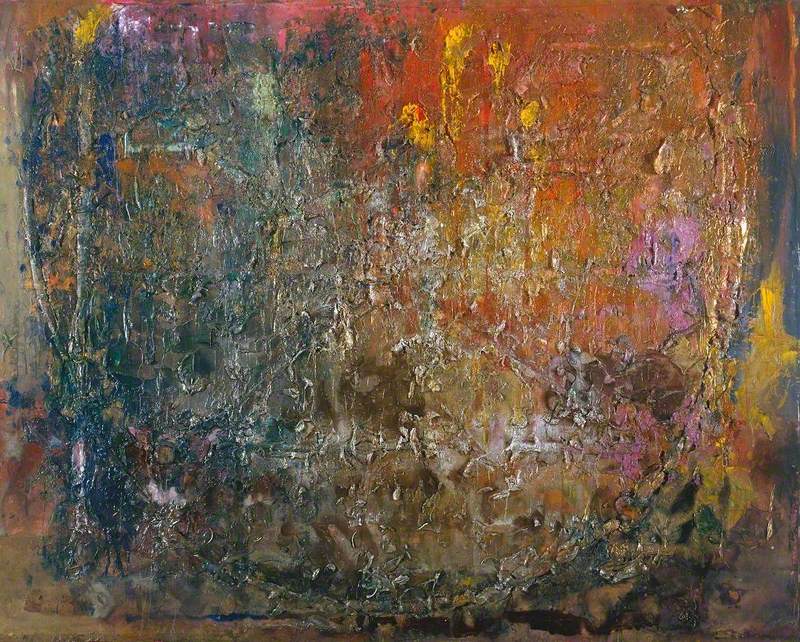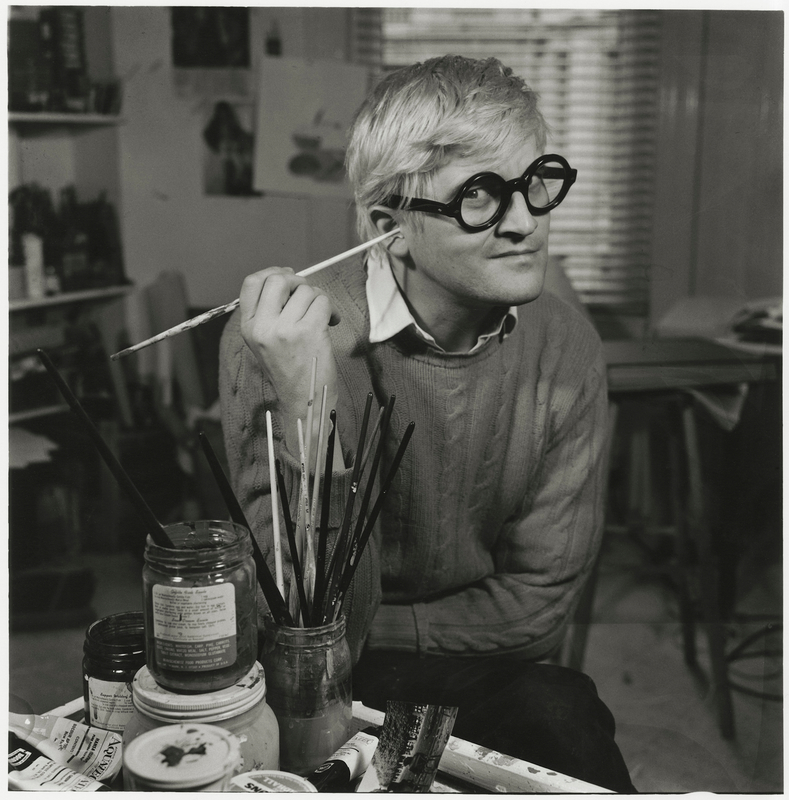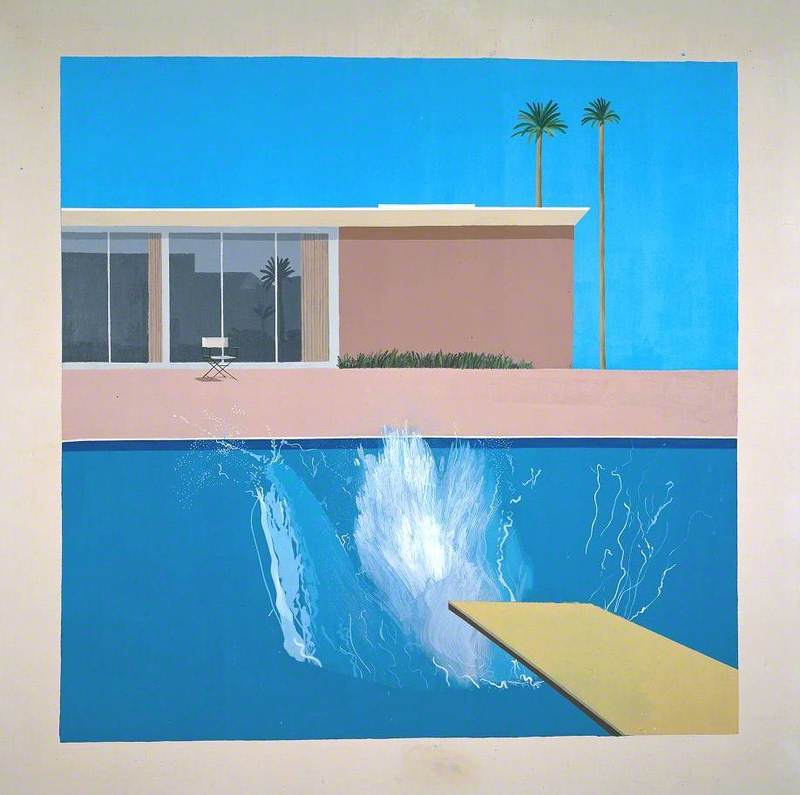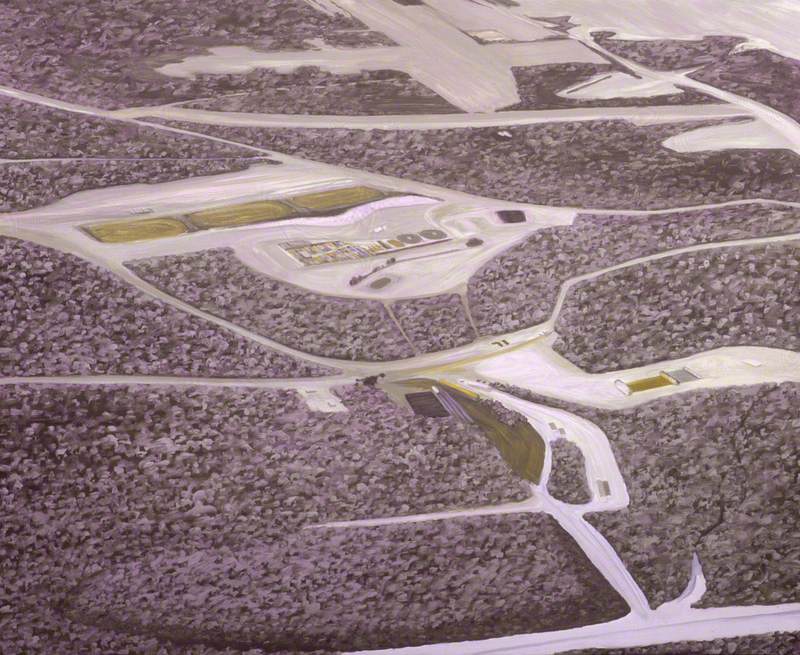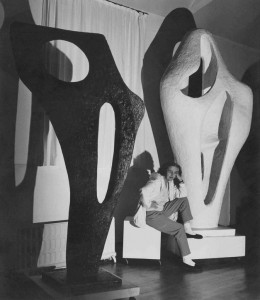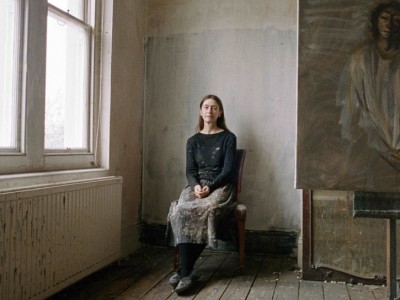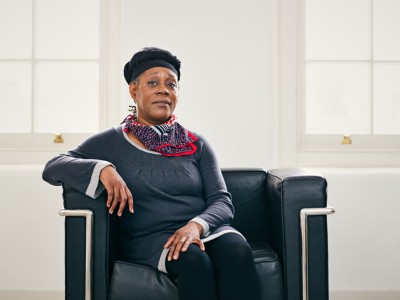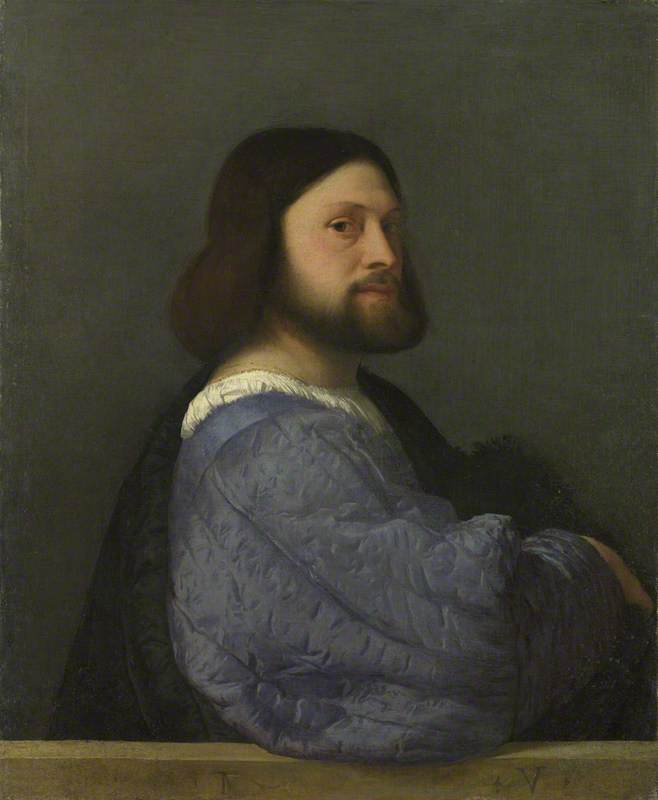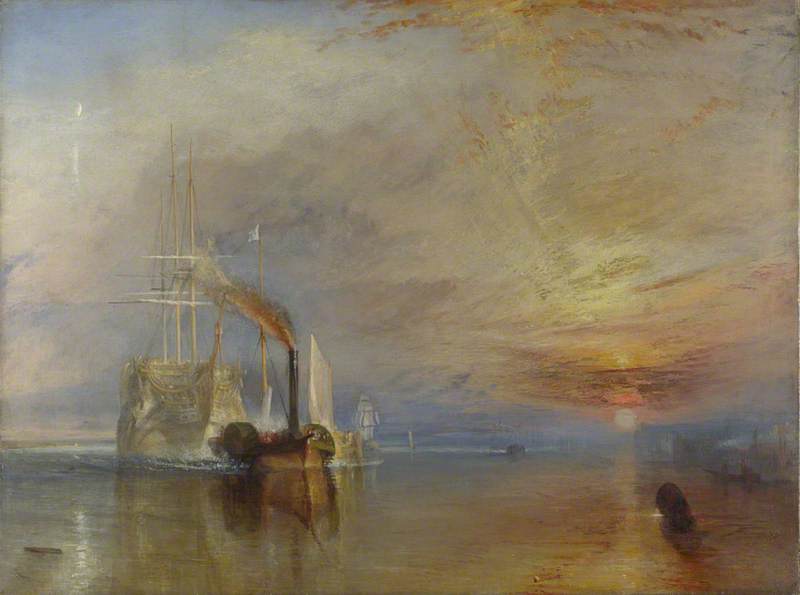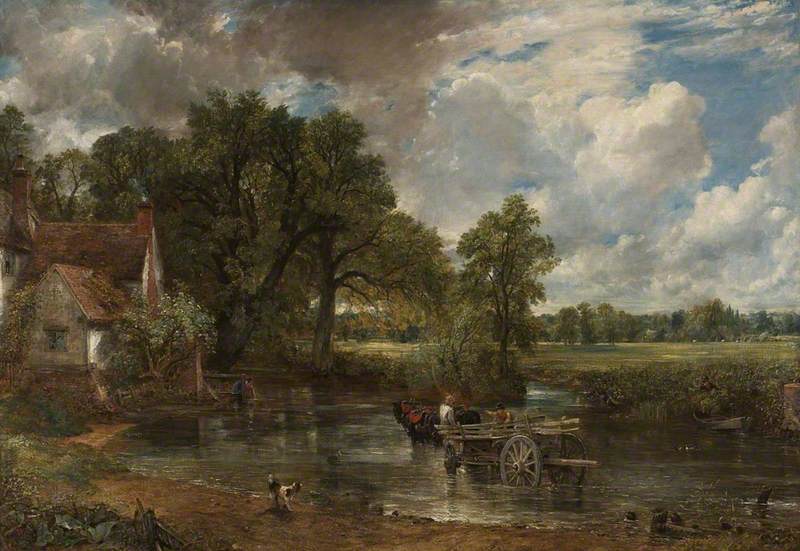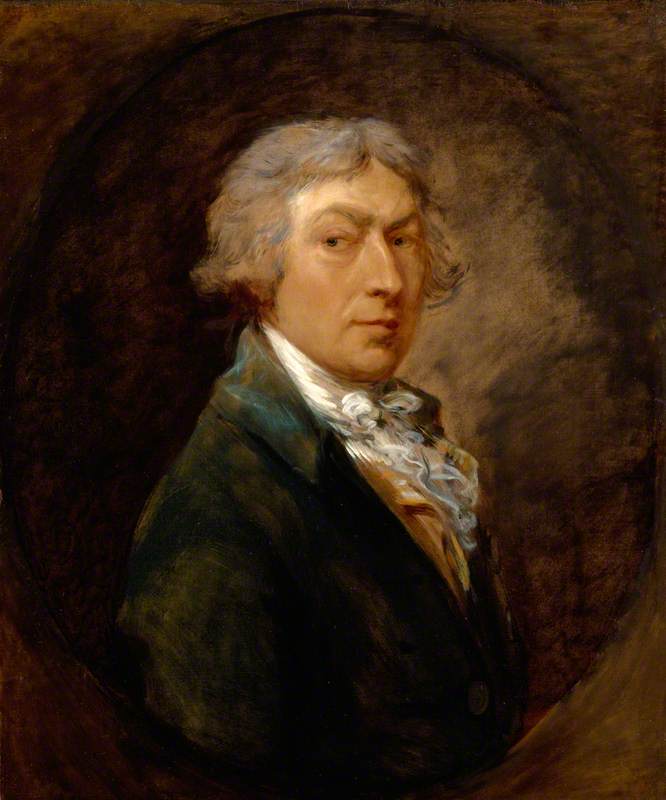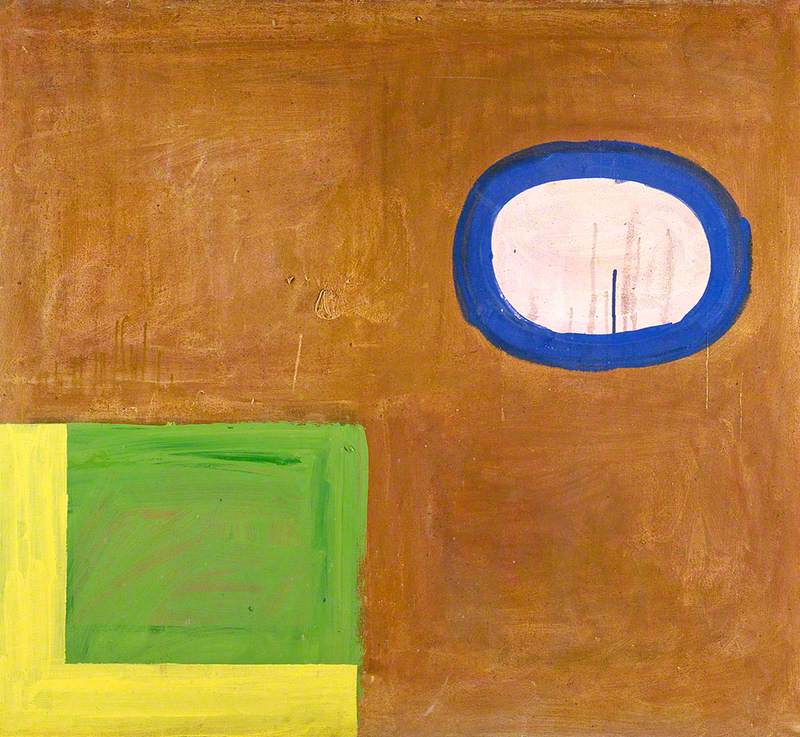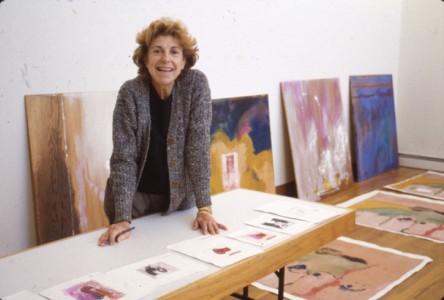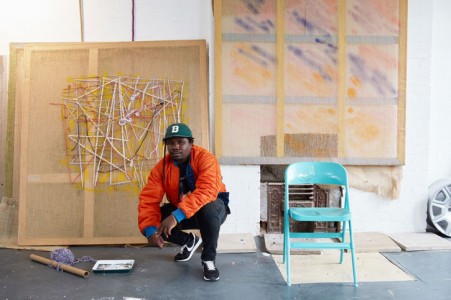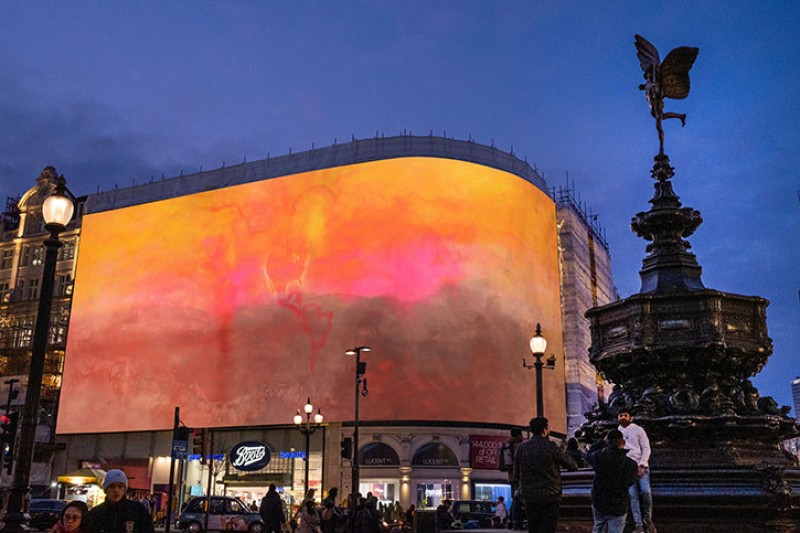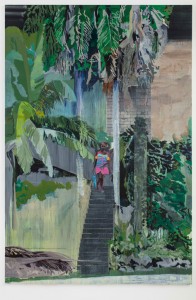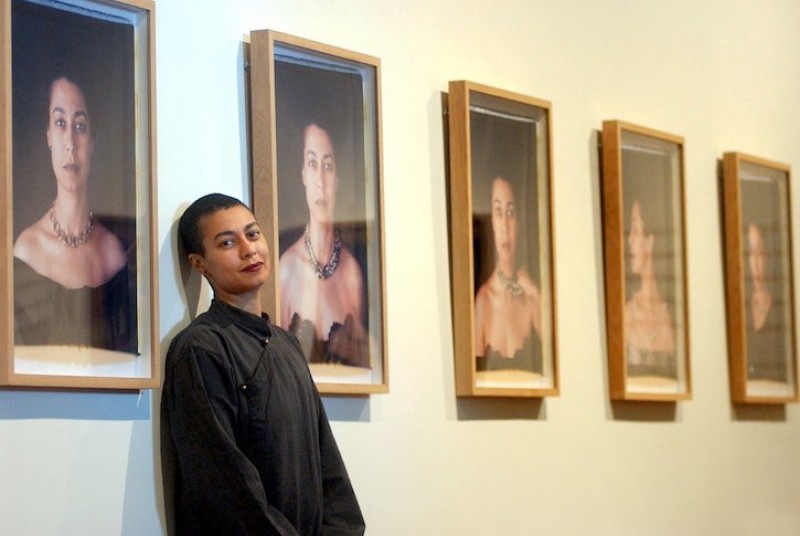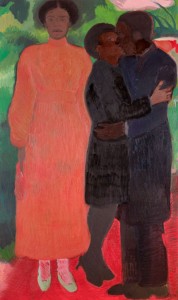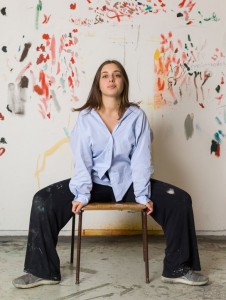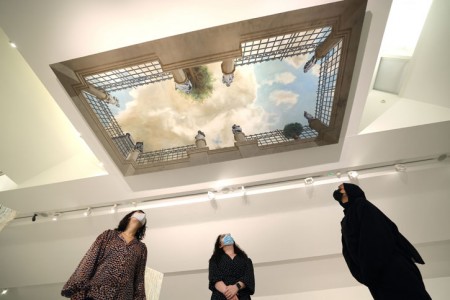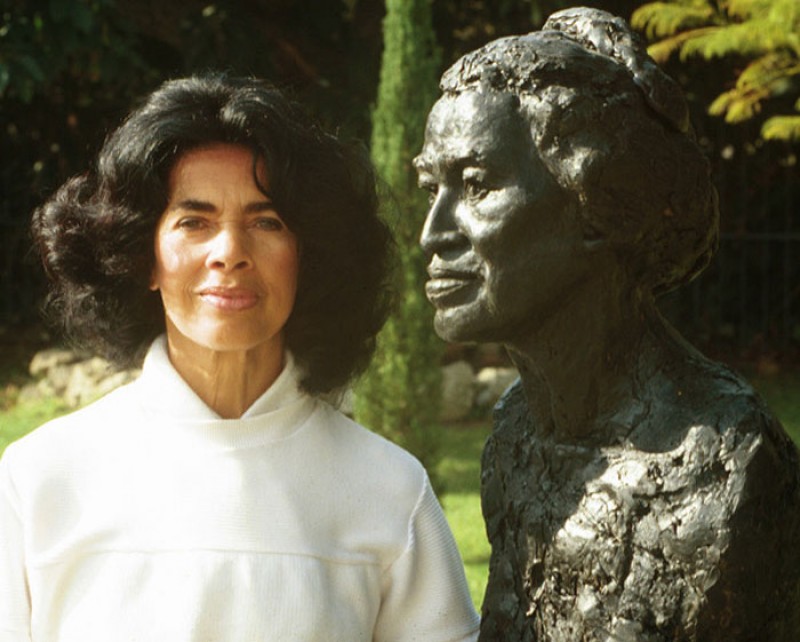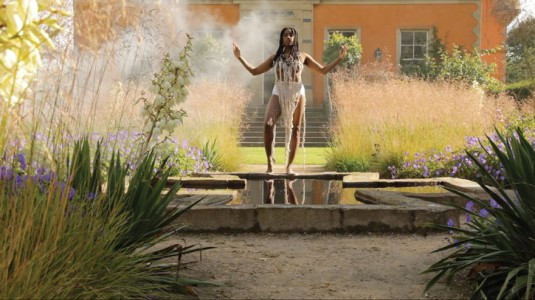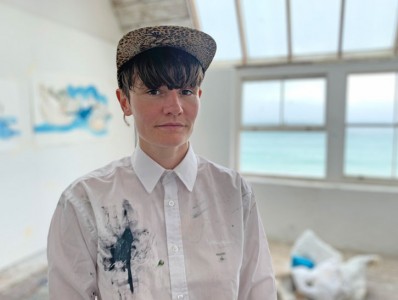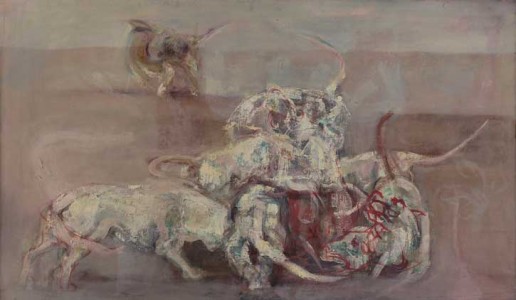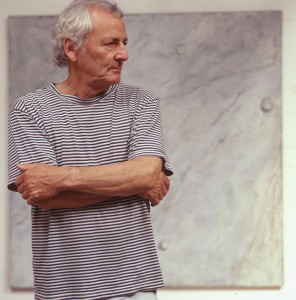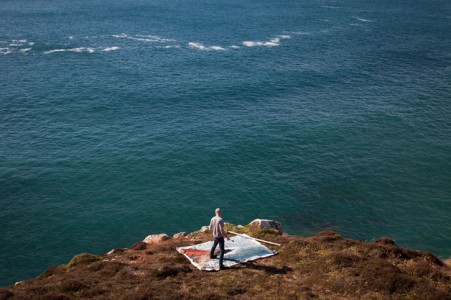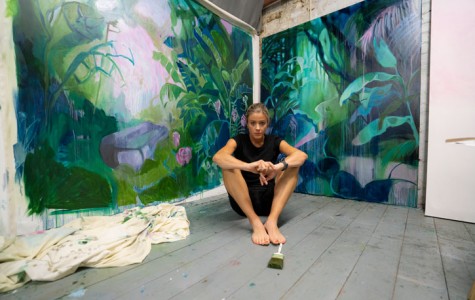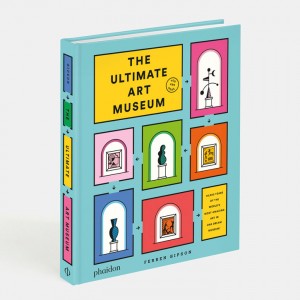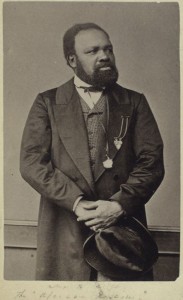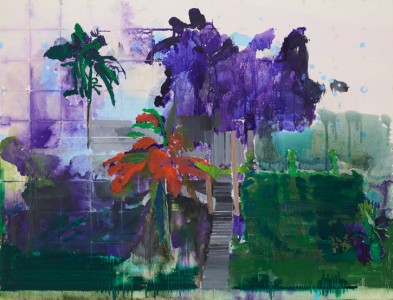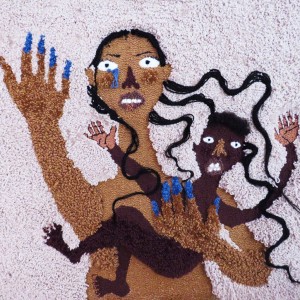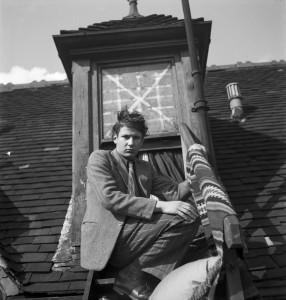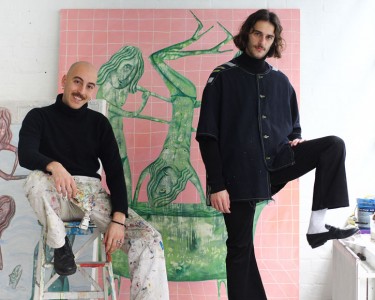The 87-year-old pioneering abstract British painter Frank Bowling is celebrated in three art venues during summer 2021, as he joined the Hauser & Wirth gallery.
The largest collection of his recent paintings is on display at Arnolfini, Bristol's main art centre, in a show titled 'Land of Many Waters'. It is the artist's first museum exhibition since his critically acclaimed and long overdue retrospective at Tate Britain in 2019, which cemented his reputation as a 'modern master'.
Sir Frank Bowling OBE, RA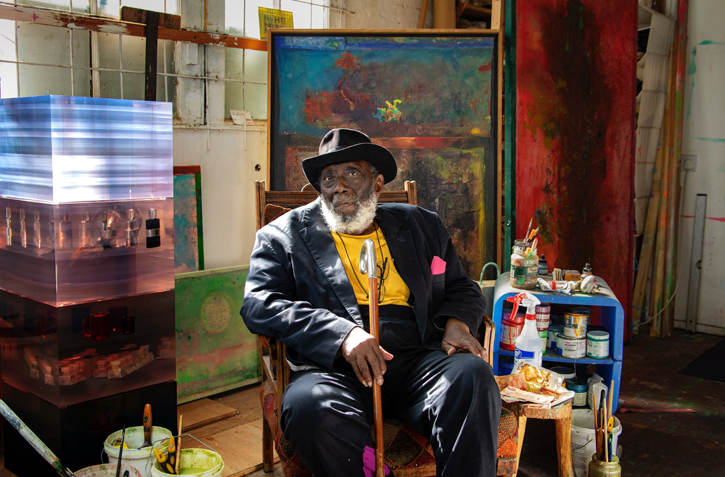
It results from collaboration with his wife, artist Rachel Scott, his son Ben Bowling, and the Arnolfini's curator Gemma Brace. As writer-in-residence at Arnolfini, I had a chance to discuss his career with him.
Installation image of Frank Bowling's 'Land of Many Waters' at the Arnolfini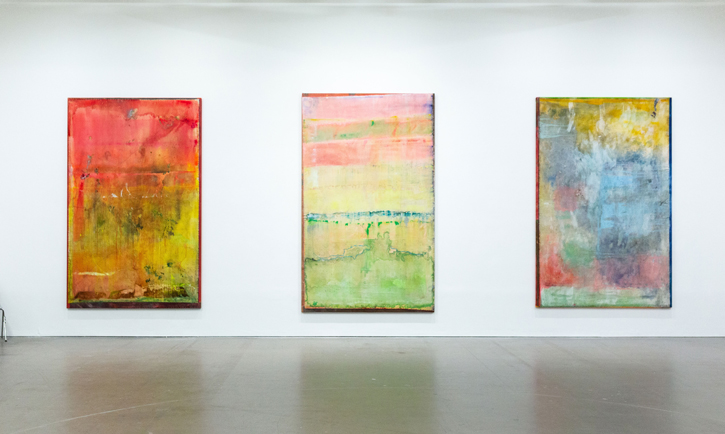
Melissa Chemam: In interviews, you said that 'you came to art quite by accident', after you had left Guyana in your late teens and settled in London. What was your relation to art and artists in Guyana?
Frank Bowling: Well, Guyana is where I was born and where I spent my formative years as a human being, but I didn't learn anything about painting, about art, in Guyana. London is where I spent my formative years as an artist. But apart from London, which is more important in my life than any other place I've been in, and perhaps New York, New Amsterdam [in Guyana] is the most important place. It reappears all the time... In my quiet moments, it reappears.
As Above So Below
2020, acrylic on canvas by Frank Bowling (b.1934) 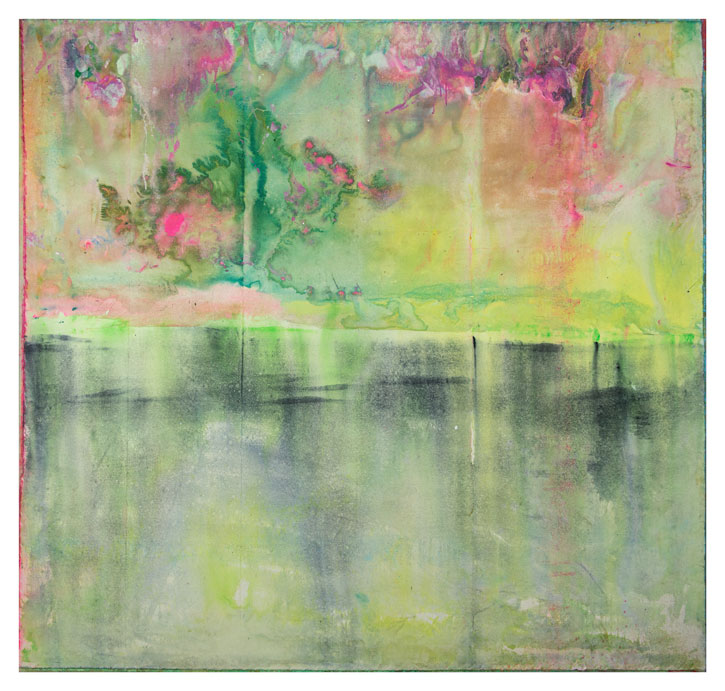
In New York and in London, my studios have been on the river. At one time, I thought my eye was influenced by London light. But when I went home to Guyana in 1989, I was staggered. When I looked at the landscape there, I understood the light in my pictures in a very different way. I saw a crystalline haze, maybe an east wind and water rising up into the sky. It occurred to me for the first time, in my 50s, that the light is about Guyana. It is a constant in my efforts.
I also met my friend Spencer Richards in New York in 1994. He is a Guyanese photographer, artist and music buff who manages my studio in New York. He'd watch me work and we'd talk and reminisce about the country and our different experiences. I was already an artist of the world but he directed my gaze back to Guyana.
Installation image of Frank Bowling's 'Land of Many Waters' at the Arnolfini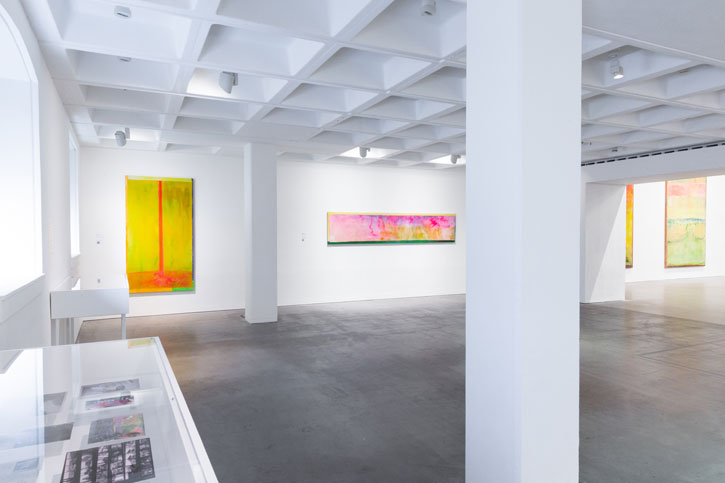
Melissa: After a few years in London, you finally got accepted at the Royal College of Art. What did you learn from that experience, and what would you say has helped shape your interests once in England?
Bowling: When I arrived in London in 1953 it felt like coming home. I learned about painting from visiting The National Gallery and the Tate, looking at the Old Masters, like Titian, and the English landscape painters – Turner, Constable, Gainsborough – and of course studying at the Royal College of Art. That all shaped me and meant that coming back to London in the 1970s also brought me back to that, to the English landscape tradition.
Melissa: You soon evolved from portraits to abstract art, and often say that you found subject matters 'hindering', that instead you felt that the subject of the artist was the material that they're using and not some story. How did you form this intuition? Did other artists influence you?
Bowling: I first went to New York in 1961 on a travelling scholarship when I was still at the Royal College, with David Hockney and Billy Apple. New York was the place where it was all happening. It was the frontline of artistic aspiration.
In London I tended to look at the tragic side of human behaviour and try and reflect that in my work, but gradually as I became more involved in making paintings, I realised that the main ingredients are colour and geometry.
And in New York there was a lot of discussion among artists of how to get the materials to deliver all the expectations, all the emotions, truth, clarity. And I realised – boom! This is it. It's about the material, not some sort of story.
Gradually I decided to erase, say, the image of my mother and replace it with shape, colour and structure. I had a huge loft on Broadway that allowed me to experiment and make large-scale works. You know, moving to New York was a blessing, it gave me absolute freedom to work on my art.
Installation image of Frank Bowling's 'Land of Many Waters' at the Arnolfini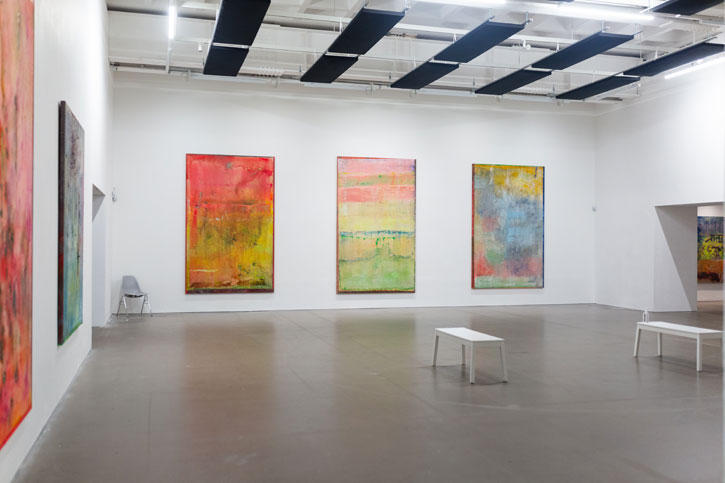
Melissa: What sparked your move to New York and America? And how did it change your feelings about your own sense of belonging? Did you ever feel like you were a British painter? Or an American painter/South American painter in any sense?
Bowling: I was born British. When I moved to London it was no more significant than moving from, say, Leeds or Manchester to London. But in London it seemed that everyone was expecting me to paint some kind of protest art out of postcolonial discussion.
For a while I fell for it. But Clement Greenberg told me, 'In America, there is no no-go area for anybody', and I took him at his word. The freedom I found there to make the art that I wanted to make was incredibly liberating. I'll always be British but I also think of myself and my work as international. It's a whole world thing.
Melissa: Art writers usually described your relations with 'Black Art' or Afro-Caribbean Art by underlining that you always rejected the idea that 'artists who happen to be black' had to be making overtly political art or be involved in protest art. What was your relation to identity in art and has it evolved with the recent changes and debates that have emerged on both sides of the Atlantic?
Bowling: I think terminology can be excluding – I don't think there's any such thing as 'black art'; I think black people make good art. I have always been frustrated about being pigeonholed as a black artist, and the expectations people have around what the work should look like and be about. It was only after I tackled the basic concerns of painting – geometry, colour, etc., and once I'd managed to apply myself to study what the business of making paintings was all about – the rules, if you like – that I began to realise that my real concern was more to do with the activity painting itself.
Frank Bowling at the 'Land of Many Waters' preview day
Taken at the Arnolfini, 2nd July 2021 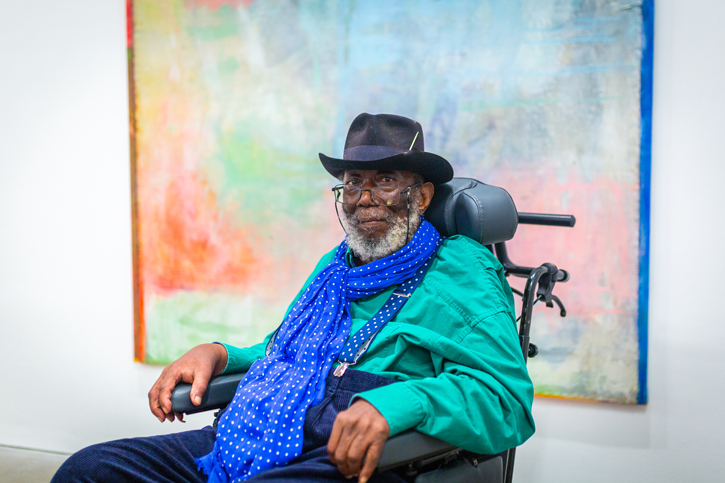
Melissa: You keep painting every day, you say, which is so inspiring and great luck for us, the viewers. How did the most recent painting included in this show at Arnolfini come about? What was your main inspiration and message?
Bowling: I'm happiest when I'm in the studio making paintings. I try to go every day and I have a good time there. I have always felt that the most important thing is to get on with the work. You just get up, get to the studio, work hard to do the best you can to make it new. And that's what I try to do every day and what I have always done.
The Pearl Poet
2020, acrylic on canvas by Frank Bowling (b.1934) 
Pearl Poet (2020) is an ethereal piece and the title was inspired by an essay I happened upon in the London Review of Books that referenced the Pearl Poet alongside Chaucer. I was intrigued by the anonymous authorship of the Pearl Poem. For some time now I have had in my possession a translated copy of Dante's Divine Comedy. I feel a strong affinity with the dream vision of medieval poetry, as I often dream about the next painting that I am going to paint.
Melissa Chemam, writer, cultural journalist, reporter
Frank Bowling's exhibition 'Land of Many Waters' is at Arnolfini, Bristol, until 26th September 2021

